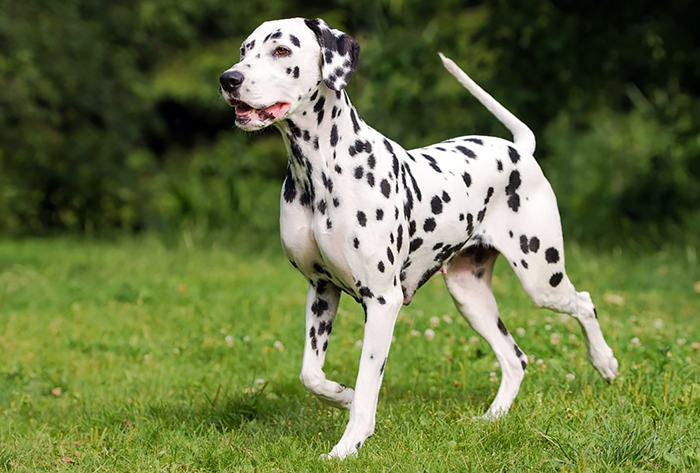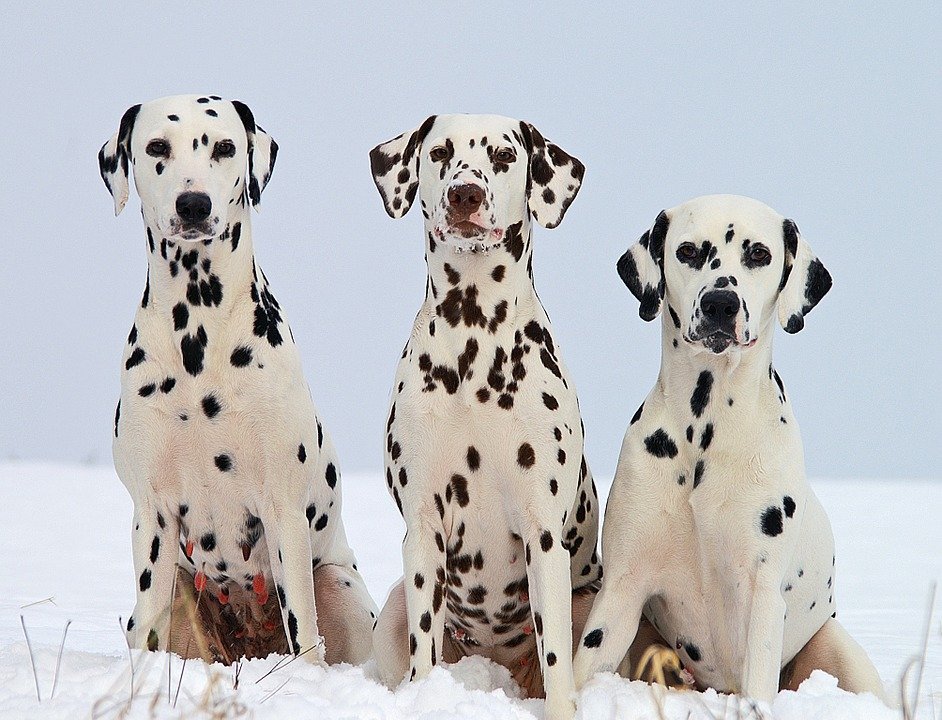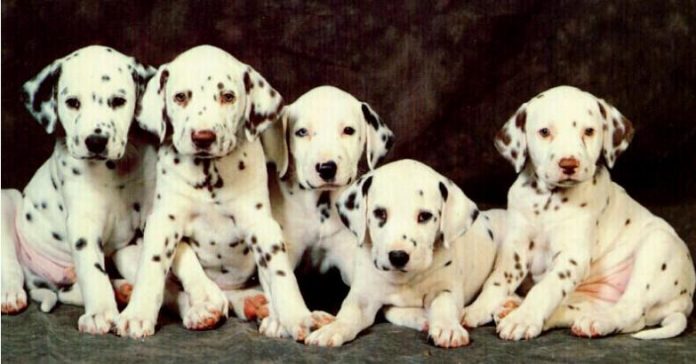The Dalmatian is a well-known dog breed, most famous for its white coat spotted with black or brown markings. Historically used as a carriage dog, this breed is very active and was once even bred to run with horses. Because of this, the Dalmatian is most suitable for dog lovers that can give it attention and time for exercise.
Although the origin of the Dalmatian’s coat pattern is not known, it is one of the most interestingly patterned breeds. Paintings of dogs resembling the Dalmatian have been found throughout the centuries. One such painting, a fresco from 1360, is held in the Spanish Chapel of Santa Maria Novella in Florence, Italy.
It is thought the ancestors of the Dalmatian may have been pointers and the spotted Great Dane. And while it did not originate in Dalmatia, a southern region in Croatia, the breed did derive its name from the region. Even the Dalmatian’s original function is obscure, but the breed probably had more than one role. Throughout the years, it has been a shepherd, a war dog, a sentinel, a retriever, a draft dog, a ratter, a trailer, a bird dog and a circus dog.
In Victorian England, the Dalmatian served as a coach dog, fulfilling both the aesthetic and practical roles — protecting horses from marauding dogs. The dogs trotted in front, alongside, or below the axle of the coach. There is now evidence that the coaching role may have been a hereditary factor.

The introduction of the automobile dimmed the Dalmatian’s position in high society, but it continued to work as a coach dog for fire engines, which were drawn by horses. It was known as the “fire-dog.” The first Dalmatian was registered with the American Kennel Club in 1988 and the breed’s U.S. Club, the Dalmatian Club of America, was founded in 1905.
Physical Characteristics:
The Dalmatian has an intelligent and alert expression with a short and shiny coat. Its distinctive spots are a well-regarded feature; however, solid patches are not encouraged in the breed standard — an abstract aesthetic ideal for the animal type. The Dalmatian also has an athletic build with strong bones and a square-proportioned body which gives it endurance, and an effortless and steady trot. The ground color of a Dalmatian is pure white with dense, black spots, while liver-spotted Dalmatians have liver brown spots.

Personality and Temperament:
This eager and playful companion should be exercised in a secure area, as it is known to roam around and is capable of running for miles before it gets tired. Although the Dalmatian is usually reserved towards unknown people and acts scrappy toward strange dogs, it is good around horses and other pets. Dalmatians may also be too lively and active for young children.
Care:
A short walk on a leash is not sufficient to meet the needs of the breed. Instead, runs and physically strenuous games are required to keep the dog fit; it makes for a great jogging partner. Other than frequent brushing to remove dead hair, the Dalmatian’s coat does not need much care. To keep it happy, provide soft bedding, shelter, love and companionship. The Dalmatian can live indoors or outdoors, but only in warm and temperate climates.
Health:
The Dalmatian, which has an average lifespan of 12 to 14 years, may suffer from minor health concerns like hypothyroidism, allergies, iris sphincter dysplasia, seizures, and major issues like deafness and urinary stones. Some may also be prone to canine hip dysplasia (CHD) or the formation of urinary calculi, as it cannot break down uric acid. To identify some of these issues, a veterinarian may run hearing, thyroid, eye, and hip exams.





